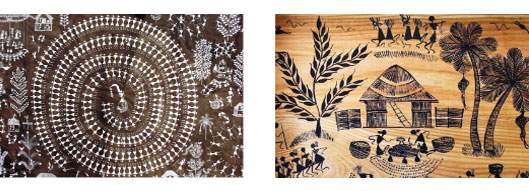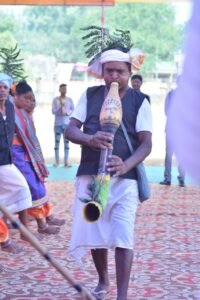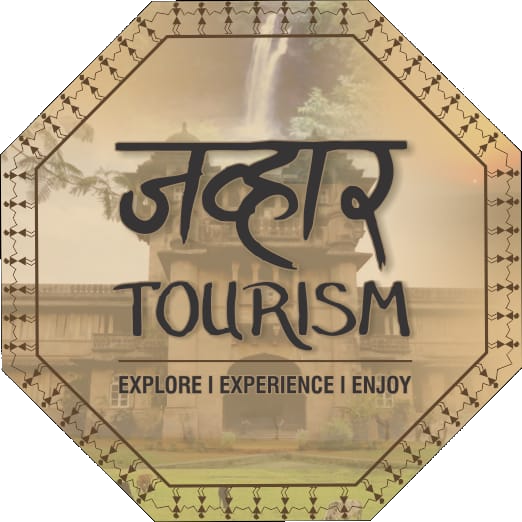Jawhar – A place with long history

A Royal Legacy: The Princely History of Jawhar, Maharashtra
Long before Jawhar became known as a peaceful hill retreat, it held the proud status of a princely state in India, later merging into the Bombay Presidency during the British Raj.
Origins and the Rise of the Mukne Dynasty
The history of Jawhar dates back to circa 1300 A.D., during the time of the first Mughal invasion of the Deccan (1294). At that time, Jawhar was under the rule of a Warli chieftain.
Legend has it that a Koli named Jayaba Mukne, who held a small mud fort at Mukane, received a divine blessing at a shrine in Pimpri, where he was saluted as the future ruler of Jawhar. Inspired and empowered, Jayaba gathered a band of Kolis and marched north, venturing as far as Surat and Kathiawar, where he stayed for seven years.
On his return, he approached the Warli chief of Jawhar with a clever request: land equivalent to the area that could be enclosed using a bullock’s hide. The chief agreed, not anticipating Jayaba’s strategy—he sliced the hide into fine strips, encircling the entire territory. With this bold move, Jayaba became the first ruler of Jawhar, founding the Mukne dynasty, and was known as H.H. Maharaj Jayabarao Mukne.
Formation of the State
Upon Jayaba’s death, his son Nemshah Mukne succeeded him. In 1343, Nemshah was recognized by the Delhi Sultanate and granted the title of Shah, establishing formal rule over a region that included 24 forts. The coronation of the first Shah was held in 1348, and June 13, 1343, is celebrated as the beginning of a new era in Jawhar’s history.
Turbulent Centuries: Portuguese, Mughals & Marathas
By the 16th century, Portuguese advances curtailed the kingdom’s expansion. However, following the decline of Portuguese influence, the Kolis regained power. In the late 1600s, aided by the Mughals, the Jawhar chief marched across North Konkan with 4,000 troops, extending his domain.
In the 18th century, Jawhar faced its most formidable challenge—the rise of the Marathas. The Peshwas took control of the southern parts of Jawhar and began managing state affairs. In 1782, an agreement was reached that allowed the Jawhar rulers to retain their territory, though under Maratha oversight.
British Era and Modernization
After the death of Patamshah II in 1798, his son Vikramshah III inherited the throne under Peshwa supervision. In 1805, a Bhil uprising prompted the Peshwas to further intervene in state governance.
When Vikramshah III died in 1821, his posthumously born son Patangshah III became ruler, with his mother acting as regent. Upon Patangshah III’s death without an heir, his widow adopted Narayanrao, later known as Vikramshah IV, who in turn adopted Malharrao.
During British administration, the state was temporarily attached and managed by the Mamlatdar of Dahanu. The young ruler was sent to Pune High School, and after receiving his education, he was formally installed as ruler on March 28, 1867. His reign saw the construction of schools, roads through Kasatwadi and Dheng Passes, and improved water infrastructure.
Post-Independence and the Last Ruler
The last ruler of Jawhar was H.H. Shrimant Raja Patangshah V (Yashwantrao Mukne)—the 19th ruler of the Mukne Dynasty. Educated at Rajkumar College, Rajkot, he later joined the Royal Indian Air Force during World War II, serving under the British Crown. For his service, he was honored with the Royal Crown and the RIAF Medal. After India’s independence, he became the first Member of Parliament from the Dahanu constituency during the First Lok Sabha.
Jawhar – Rooted in culture and tradition

Jawhar, one of the few remaining tribal kingdoms in Maharashtra, is a veritable treasure house of tribal culture and heritage. Jawhar offers you the unique opportunity to expose and enlighten yourself with the tribal way of life, which is a distinct culture of its own consisting of curious rituals and colorful folklore.
The Warli tribes of Jawhar and their world-famous Warli paintings are today an inherent part of Jawhar. The vibrant, ebullient Warli paintings are said to have originated in the 10th century AD.
These paintings depicting the diverse aspects of everyday life form an integral part of religious rituals and marriage ceremonies. Triangular humans and animals with stick-like hands and legs and geometrical designs with rows of dots and dashes are drawn on the mud walls of the huts of the tribal. These paintings depict wedding scenes, various animals, birds, trees, men, women, children, descriptive harvest scenes, group of men and women dancing around a person playing Tarpa, dancing peacock, etc.
Warli paintings are strangely ascetic, unlike other colorful folk paintings of India. They are painted in white on an austere surface decorated with occasional dots in red and yellow. It is believed that these paintings invoke the power of the gods.
Besides this, the art of making paper-mache masks and toys is an intrinsic part of the Jawhar culture. Another item that is native to Jawhar is the making of beautiful bouquets from dried natural plants and flowers.
Culture of Jawhar


Marriages, festivals, and harvests are all occasions for dances. The foot-tapping dances of Tarpa and the Dhol create a magical effect and reflect the distinct identity of these simple folks. The accompanying musical instruments are innovated by the tribals themselves with locally available material.
The Tarpa dance is the most popular dance form of the Warli and Kolis and is performed in the celebration of the harvest from September up to the festival of Diwali, during the moonlit nights. The lead dancer of the group taps the ground with an ornamented stick (Ghol Kanthi) in a rhythmic beat. The others hold each other around the waist and wind their way around the musician.






